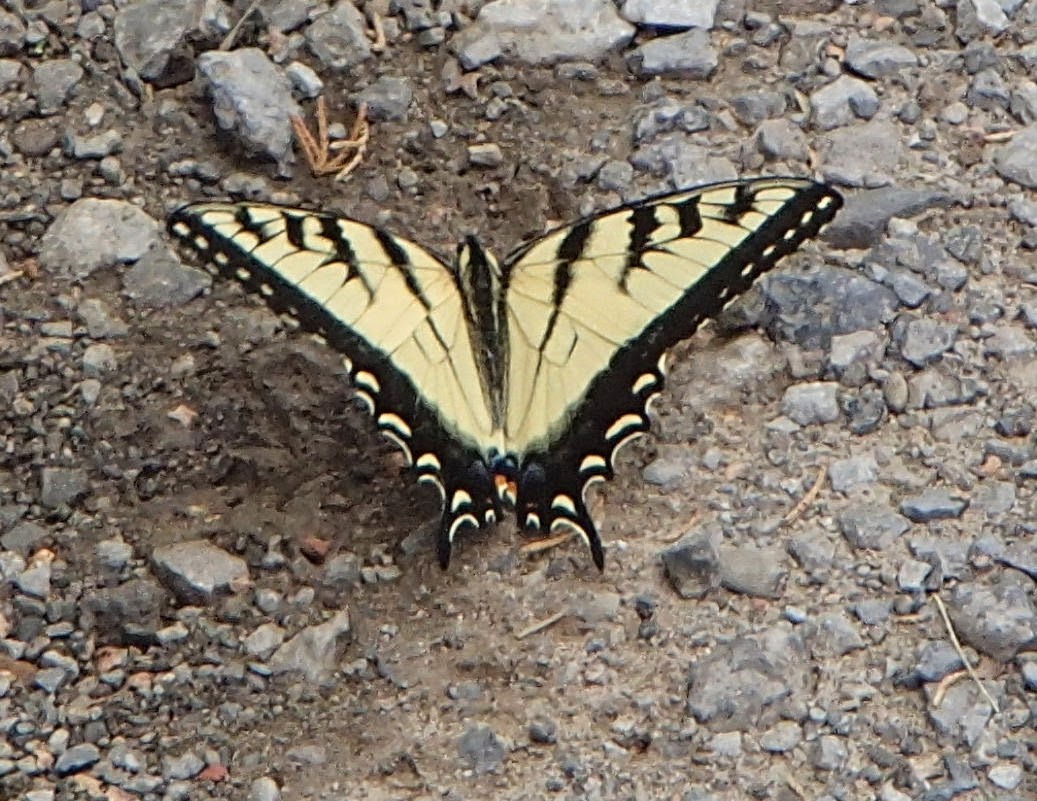One of the things we decided to plant this year was the Ground Cherry (Physalis), sometimes called the Cape Gooseberry. It is neither a cherry nor a gooseberry, but a "nightshade" closely related to the Tomatillo.
 |
| The Ground Cherry (Physalis) and fruits |
We planted it as a novelty in the same bed we used last year for our Tomatoes. This turned out to be a great spot for these plants. They have been fruiting for well over a month and it seems they will continue for quite a while. Apparently, one plant can generate upwards of 200 fruits a season.
The fruit is adorned with a husk that is shaped like a paper lantern. They are green on the stalk and to harvest you simply wait for these little "lanterns" to yellow and fall to the ground. Once gathered you can let them dry for a while as the small tomato-like fruit ripens to a yellow orange colour.
 |
| Ground Cherry "paper lanterns" harvested from the ground |
With all of the fruit we had collected so far, it was time to find a use for them and begin some canning work.
We decided to make a Ground Cherry jam.
With about 2 litres of fruit husked, we cooked the Ground Cherries adding 1/2 litre of lemon juice.
 |
| Husked Ground Cherries ready for processing |
We started to mash the fruit as it cooked. This turned out not to be necessary in the long run.
On the side, we measured 1 litre of granulated sugar. we took about a quarter of this and mixed it into a bowl with 1 Tbsp of pure Apple Pectin.
The rest of the sugar was added to our Ground Cherries, once the mix started to boil.
With the sugar added, we again waited to get the Ground Cherries to a boil. We then ladled the mixture into our sugar/pectin mix. This was whisked and slowly we added more until at least half of the Ground Cherry mixture was used.
Everything went back into our cooking pot and once again brought to a boil while whisking.
Using a spoon and some ice we tested the jam for consistency as it cooked.
Once a firm set was achieved, we simply ladled our jam into pasteurized jars and set the sealed jars in a large boiling pot for further pasteurization, by boiling for at least another 10 minutes.
The result is a golden-coloured jam. It is sweet and again very reminiscent of pineapple....well worth the work!
 |
| A very unique jam...well worth the work |
On the foraging front, Carol found an old wild Pear tree on the road side. It was loaded with small Pears.
This is a site often seen in Niagara. As orchards have given way to vineyards, subdivisions or simply left to be reclaimed by nature, many old trees previously part of these orchards or simply having propagated away from them continue to generate an abundance of fruits.
Since the trees are no longer cared for, pruned or sprayed, the fruit tends to be smaller, oddly shaped and affected by various insect.
In the case of Carol's Pear tree, the Pears were rather small and suffered from all of these things. However, for the most part, the Pears were in good shape and great to eat. With a bushel on hand, we had to do something.
 |
| A load of "wild" pears....what to do? |
The solution: canned wild Pears with Basil.
Our Basil has done very well this year. We have many plants now going to seed, so it was natural to "marry" the two.
Our process was simple. After sifting through the best pears and cleaning the best, we stemmed them, peeled them and cored the flower end of the fruit (this is the hardest almost "wood"-like part of the flesh).
We prepared a simple syrup with some lemon juice. The ratio is 1 part sugar; 3/4 part water; and 1/4 part lemon juice (by volume).
We poached the pears in this solution. The pears will get very tender and the flesh will become slightly translucent once cooked.
 |
| Poaching Pears in a simple syrup with Lemon juice |
 |
| ...great use for an overabundance of Basil |
 |
| Finishing the canning process |
 |
| We're looking forward to enjoying these all winter long. |
 |
| It's hard to believe how abundant the Golden Raspberries have become |
So we'll close this week with a picture of a rather pretty and helpful butterfly: this is the Eastern Tiger Swallowtail.
 |
| Eastern Tiger Swallowtail |
No comments:
Post a Comment